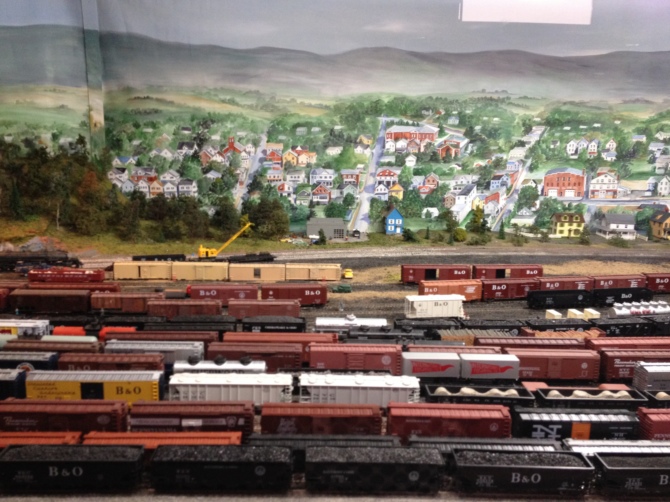Browse by Category
- All Categories
- 150th Anniversary
- Frederick County
- State Parks
- National Park Service
- Antietam
- Washington County
- Newcomer House
- 1865
- Literature
- Recreation
- Living History
- Museums
- Carroll County
- Historic Preservation
- Food/Dining
- Civil War Trails
- African American History
- Transportation
- Main Streets
- Education
- Women's History
- Geotrail
Bugle Call
The Heart of the Civil War by Rail
January 5, 2017

While some museums and historic sites close for the winter, train enthusiasts can enjoy the region’s railroad museums all year round. Read up on trains in the Civil War before your next visit to a museum of locomotive history. Editor's Note: a version of this article originally ran in the Valley Revue magazine.
Military strategists have long understood the importance of transportation routes for supplying and moving troops. The Civil War marked the first war in world history in which railroads played a role.
Trains in the United States began in the second decade of the 19th century and grew enormously in the years leading up to the Civil War. The Baltimore & Ohio (B&O) Railroad, incorporated in 1827, competed with the Chesapeake & Ohio Canal to connect goods from agrarian western Maryland with port cities along the East Coast. Starting in 1843, when a telegraph line was installed along the tracks between Washington DC and Baltimore, rail lines served both transportation and communication needs.
An estimated 22,000 miles of rail crisscrossed the eastern U.S. when the war broke out in 1861, with the B&O linking the nation’s capital and the north. Under the direction of President Abraham Lincoln, Congress passed the Railways and Telegraph Act in January 1862. This legislation empowered the president to seize privately owned rail property for the war effort and place railroad employees under military control. It also created a new federal agency, the United States Military Railroad.
Throughout the war, railroads proved invaluable for moving soldiers and supplies as well as carrying information to military, government and media leaders—and thus became attractive targets for disrupting armies. Defending a railway was one of an army’s most important tasks. Thomas “Stonewall” Jackson’s Confederate troops gained infamy by burning railroad bridges and cutting telegraph lines at the outset of the war. Skirmishes, sieges and battles broke out around railroad junctions like Monocacy, outside of Frederick. Soldiers injured in battle often rode in hospital train cars to access medical care in larger cities.
The importance of railroads continued to grow after the Civil War. Lincoln’s funeral train symbolized the nation’s mourning as it traveled from Washington DC to Springfield, Illinois in the spring of 1865. In the decades following the War, veterans often traveled to battlefield reunions by train.
Visitors can learn about the region’s railroad history at museums throughout Maryland’s Carroll, Frederick, and Washington Counties including the Brunswick Heritage Museum (open Friday-Sunday), Hagerstown’s Discovery Station Museum (Tuesday-Saturday), the Hagerstown Roundhouse Museum (Friday-Sunday), the Hagerstown Model Railroad Museum at Antietam Station (Sunday), or the Western Maryland Railway Historical Society in Union Bridge (Sunday and Wednesday).
Pictured, from top: This display at the Brunswick Heritage Museum is one of the largest HO scale model railroads on the East Coast; an illustration from Harper’s Weekly shows the Confederates’ June 1861 destruction of the B&O Railroad bridge at Harpers Ferry, image from Library of Congress via CrossroadsofWar.org; the current Antietam Station building was erected in 1911, in time for the 50th anniversary of the 1862 battle, and many veterans traveled through its doors.
